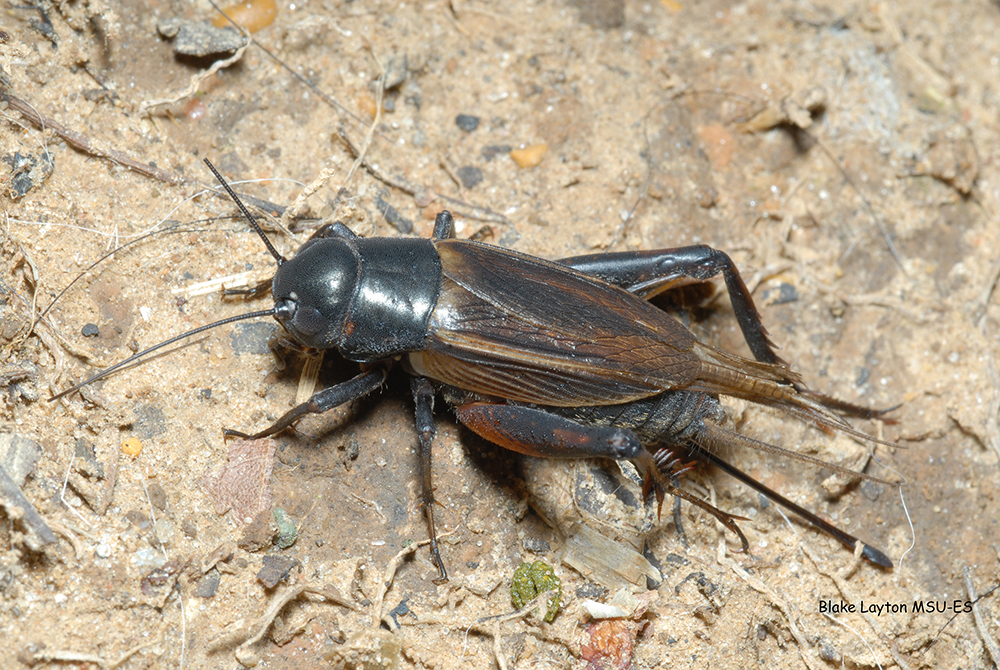Black Field Cricket | Vol. 3, No. 26
Related News
June 20, 2013
April 11, 2013
April 2, 2013
March 14, 2013

Black field crickets become more obvious in late summer and fall because they have reached adulthood by then. Males are singing in an attempt to attract a mate, and adults of both sexes are flying about at night in search of mates and are attracted to lights around buildings. Mature adults are about ¾ to 1 inch long and females are easily distinguished by their long, needle-like ovipositor—looks like a stinger but can’t penetrate the skin. They use this ovipositor to insert their eggs into soil, where they overwinter to hatch into nymphs the following spring.
Although field crickets are not major pests, they sometimes damage crops such as emerging wheat and ryegrass seedlings in the fall, or cause feeding damage to strawberries and some vegetable crops. Such damage is most likely when large amounts of grass clippings or organic mulch are present, and crickets can be a particular problem in organic vegetable and strawberry production where organic mulch is used for weed control.
Sporadically, unusually heavy outbreaks of crickets cause problems around homes and businesses in late summer and fall due to huge numbers of crickets accumulating around and in buildings after being attracted by lights. In some cases, cricket numbers can be so high they present a safety hazard due to risk of slipping on crushed crickets and disrupt businesses in other ways. This phenomena is more common farther west, but sometimes occurs here as well.
Control: Light management is the key to reducing cricket numbers around buildings. This includes any steps that can be taken to reduce outdoor lighting, or to use lights that produce wavelengths that are less attractive to crickets and other night-flying insects. Such steps include: keeping lights off when possible; shielding lights so light is directed down where it is needed, rather than out into the night; using bug-proof lights, such as yellow “bug-lights”, sodium vapor lamps, or low attraction LED lights; or placing exterior lights on poles away from buildings—so the light reaches the building but the insects are attracted away from the building. Exclusion, which involves making the building “bug-tight” so crickets can’t just crawl in under doors and through other cracks and crevices, is also important. Outdoor perimeter sprays with products containing pyrethroid insecticides such as bifenthrin, cyfluthrin, or cyhalothrin can be helpful to control unusually heavy populations. Baits formulated specifically for crickets can be used for proactive control in agricultural settings. Organic baits are available, but these are slow-acting and must be used preventively.
Blake Layton, Extension Entomology Specialist, Mississippi State University Extension Service.
The information given here is for educational purposes only. Always read and follow current label directions. Specific commercial products are mentioned as examples only and reference to specific products or trade names is made with the understanding that no discrimination is intended to other products that may also be suitable and appropriately labeled.
Sign up to receive Bug's Eye View.